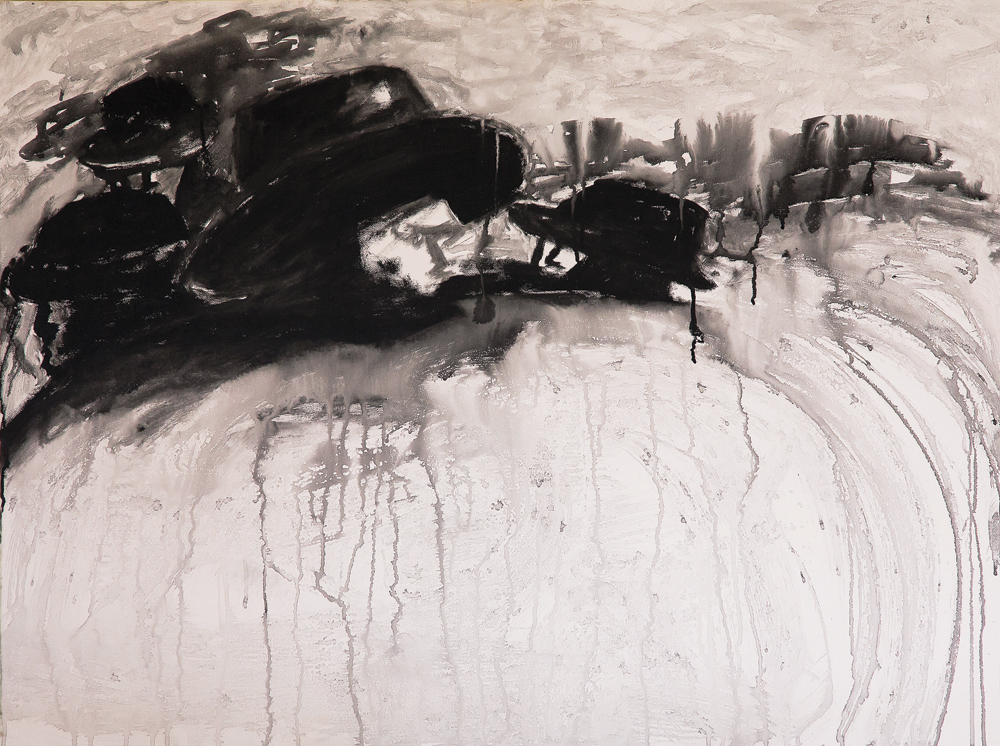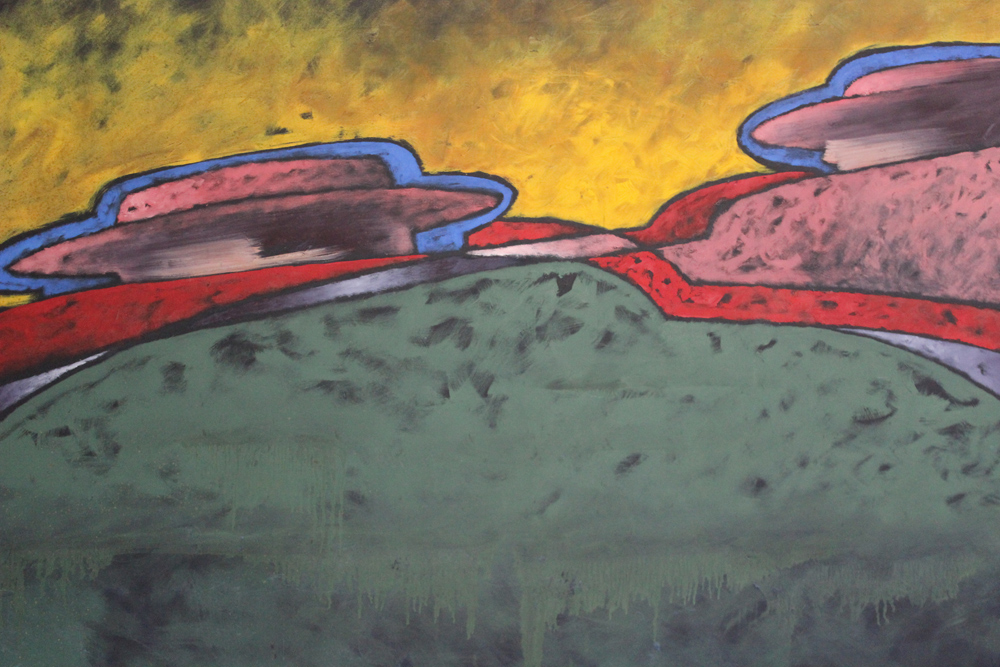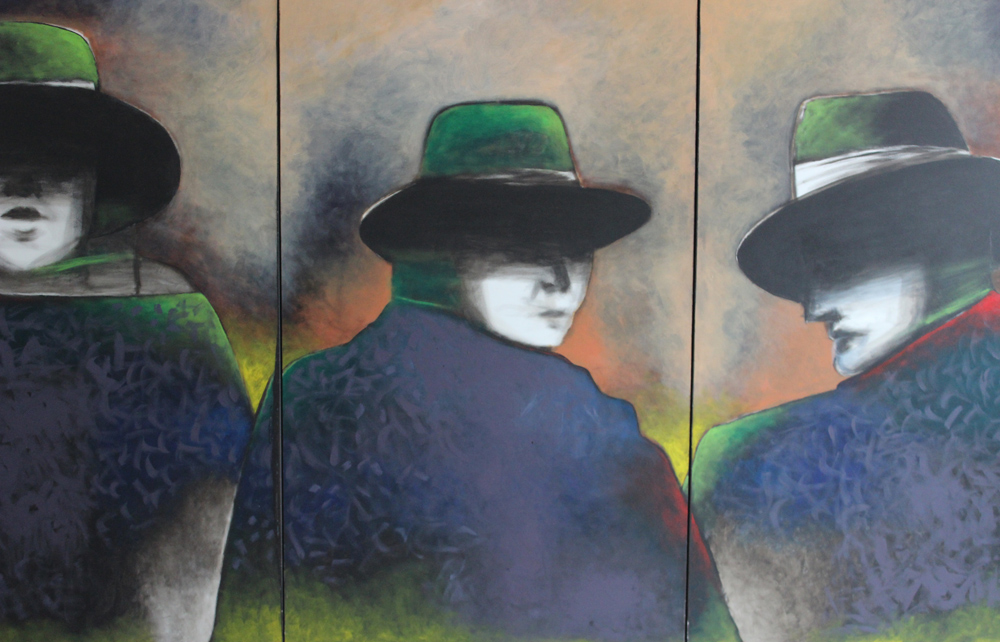« Reviews
Antonio Cortés Rolón – Éxodo
Galería Cidreña - Cidra, Puerto Rico
By Abdías Méndez Robles
“Art is a reflection of the world. If the world is horrible, the reflection in the mirror is horrible.”
Paul Verhoeven (1938)
Antonio Cortés Rolón lived like an emigrant during his stay in New York from 1983 to 1985, when he studied for a master’s degree at New York University. This period allowed him to make contact with artists and professors like John Kacere (1920-1999) and Larry Rivers (1923-2002), with whom he broadened his education as a visual artist, deepened his knowledge of Pop art and awakened his interest in the theme of migration. Cortés Rolón told me that his affinity for Pop began in his youth, before arriving in New York, but that later it strengthened when he met Rivers. It was a period during which his visual language evolved in form and content. Furthermore, the experience of living as just another emigrant, among other Puerto Ricans and foreigners of different nationalities, influenced his work thematically.
The professional task to obtain his master’s degree in 1985 included a research project dealing with emigration. As a result, he opened an exhibition at the 80 Washington Square East Galleries, an extension of NYU’s Steinhardt School, assembling 20 artworks called “The Emigrant.” As part of the investigative process for this exhibition, Cortés Rolón delved into the theme of the Latin American and Puerto Rican diaspora in the United States. One of the most salient findings, the artist explained to me, was to learn about the experiments done by the U.S. in Puerto Rico, among them the trial of the first contraceptive pill and the use in the 1960s of the so-called “Agent Orange”-a chemical later used during the Vietnam War-in burning and contaminating forest sectors of Puerto Rico where the incidence of cancer increased considerably. Data like the aforementioned awakened in Cortés greater interest in the living conditions throughout history in his native country and the conditions that unleash migratory waves.
Cortés Rolón has made his art a reflection of the world in which he has lived. In New York, the artist rediscovered himself upon realizing that he was also an emigrant who, like the others, one day had left his country in search of opportunities. This experience has become a recurring element in his work over the last 35 years.
That said, emigration has not been the only theme in his 50-year career, since his recent series, “An Actor in the White House,” created in collaboration with the curator Paco Barragán, dealt with the theme of the relationship between politics and celebrity in today’s world. The presence of the imprint of Pop has been a recurring element in various moments of his career, although he has also embraced Neofiguration and Abstract Expressionism throughout the decades.
“Éxodo” (Exodus) summarizes in a retrospective manner the last 35 years of his trajectory. The project arose from his reaction to growing emigration suffered by different regions of the world, specifically Puerto Rico, where emigration has been an escape valve to confront different cycles of economic crises. The social effects have been downplayed, and the government of the island has encouraged the exodus as a palliative for the employment crisis. The result of this is a demographic shift that has left more than half of the population of Puerto Rico outside of the country. One can point to some significant cycles, principally during the decades of the 1910s, 1950s and 2010s, in Puerto Rican emigration to other territories of the U.S., mainly Hawaii, California, Chicago, New York and, presently, Orlando.
Cortés’ current experience with emigration takes on a different tone because today he is one more “victim” of family separation, as his son recently moved to Florida to continue his professional studies. Beyond seeing the political and economic problem due to the employment deficit as a technocrat would, the artist sees the human side of the conflict; he sees men and women who find themselves forced to continue their lives outside of their environment, taking with them their customs and culture. The artist immortalizes on the canvas characters that do not reflect anguish. He does not see the emigrant as a victim, but rather as an individual in a constant search for opportunities and progress, just like his own personal experience and the one his son is living today.
The works are populated with silhouettes and characters with forms that are very well stylized, delineated and colored. In the compositions, dramatic lights abound, suggesting that they form part of that theater that is life. The hats, as in the piece Un verano en Nueva York, symbolize the prevailing traditions.
Most of the characters’ faces are hidden, leaving open to the imagination the personification of each one of them, as in the piece Dos emigrantes (1987), in which Pop is manifested in a drawing with a well-defined hard-edge outline, as though they were images taken from a comic strip or newspaper.
Another interesting piece is Tres emigrantes (2005), in which the facial expressions capture one’s attention. There are contrasted emotional states; they appear to be observing the viewer himself, the same scene, but each character decodes and interprets the information in a different way. Their facial expressions display the dichotomy between what they look at and what they interpret. It is a different look, just as each mind is different, each experience. The chiaroscuro suggests a certain dramatic mystery behind the characters. The figures appropriate the space that we can only look at and not penetrate, because there is an invisible barrier between the figures and the viewer.
Cortés Rolón is an artist whose profession is his reason for being; he lives committed to art and his personal discourse as a creator. Prizes, recognitions and local and international exhibitions endorse the trajectory of his career. “Éxodo” is the expression of a social problem that today affects and modifies the social fabric of Puerto Rico. It is the voice of the artist as a witness to his time, as a narrator who immortalizes the history and evolution of a nation.
(October 28, 2016 - January 20, 2017)
Abdias Méndez Robles is an artist and art critic. He is the current president of AICA-Puerto Rico and the Asociación Puertorriqueña de Artistas Plásticos.
Filed Under: Reviews







































Leave a Reply
You must be logged in to post a comment.